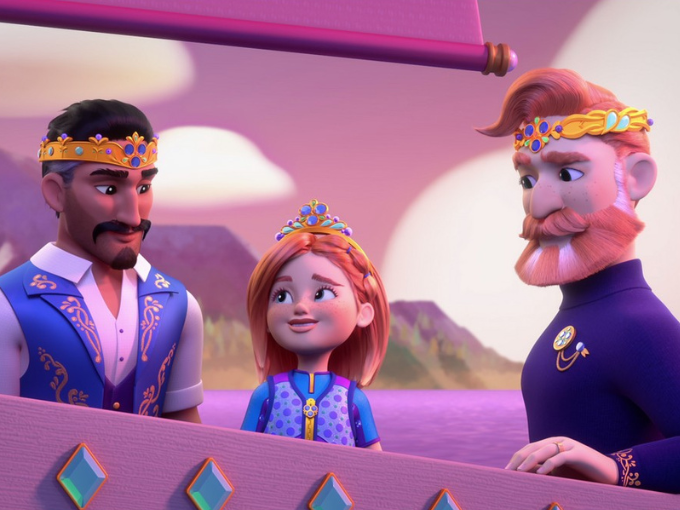While TV content for kids and teens continues to include more LGBTQ characters, GLAAD has outlined room for growth—especially after a year when many inclusive shows got axed or came to a natural conclusion.
The advocacy org released its latest Where We Are On TV report yesterday. Tracking LGBTQ representation on the small screen, this 19th edition of the annual study focused on scripted programming from the 2023/2024 TV season.
In primetime, GLAAD counted 64 LGBTQ characters overall—and 39 of them were series regulars, representing 8.6% from a pool of 454 regulars. That’s a two-point drop from 10% last year. In streaming, there were 327 LGBTQ characters (208 regulars and 119 recurring), down 29 compared to 2022/2023.
The report attributes these dips in part to the fact that Hollywood’s dual strikes caused delays in the 2023 release calendar. And roughly a quarter (24%) of all LGBTQ characters counted will not be returning because their series are ending or have been canceled, which means that new content will be needed in order to sustain the momentum.

Princess Power features Sir Benedict and King Barton as royal parents to Princess Bea (Netflix)
Netflix maintained its lead over other streamers in overall representation, with 155 LGBTQ characters (thats almost half of all streaming characters counted in the study). Netflix’s kids content highlights on this front include teen series Heartstopper (pictured), which added two trans characters and a storyline on asexuality; and CG-animated preschool toon Princess Power, where one of the protagonists has two gay dads.
Meanwhile, Disney Channel debuted Hailey’s On It! (with two queer couples in the mix) and reupped diverse series like Moon Girl and Devil Dinosaur and High School Musical: The Musical: The Series. Also called out for featuring numerous queer couples were Max’s Adventure Time Fionna and Cake; and Cartoon Network’s Summer Camp Island and Craig of the Creek. And Nickelodeon received a shoutout for nonbinary representation in Monster High and Transformers: Earthspark.
“As anti-LGBTQ legislation continues to be proposed and instituted at alarming rates—much of which is directly aimed at access for LGBTQ kids to schooling, facilities and education systems—it is vital that content made for kids and families depict the LGBTQ community in a positive and accurate light,” the report stated.
Tweens and teens are also keen to see more diverse relationships and identities on screen. According to a UCLA study from last fall, 38% of 13- to 17-year-olds are interested in seeing more aromantic and/or asexual characters in TV shows.
The full GLAAD study is available on the org’s website.
Image courtesy: Netflix / Samuel Dore






















